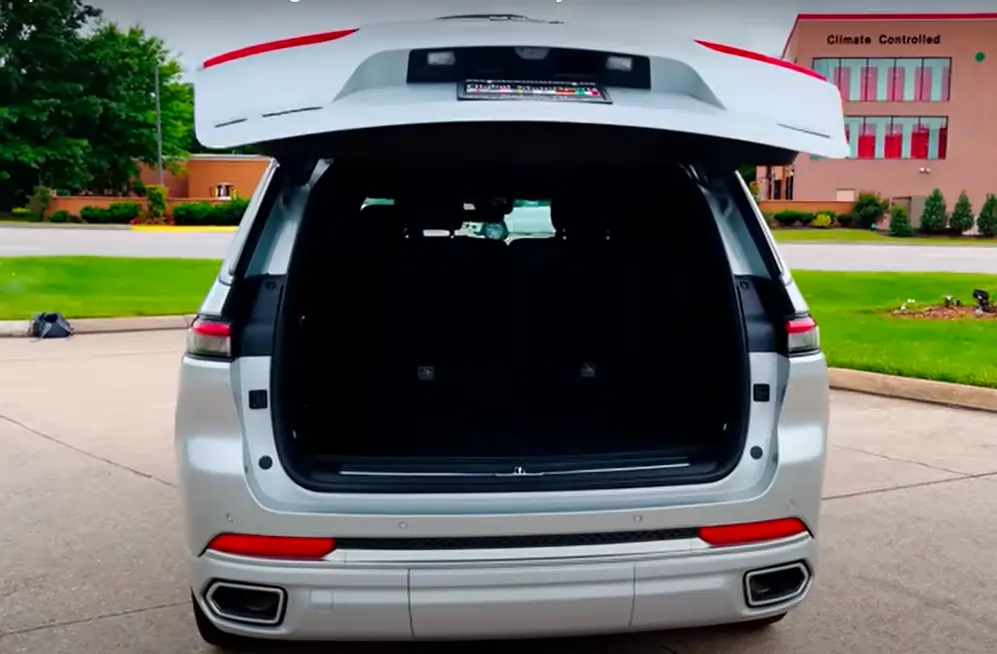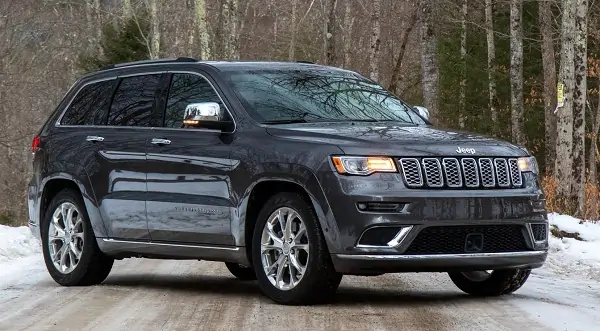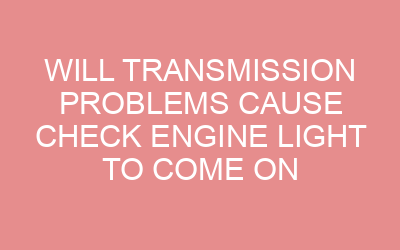Jeep Wranglers typically last for around 200,000 to 300,000 miles. With proper maintenance and care, a Jeep Wrangler can easily last for many years.
Welcome to the world of Jeep Wranglers! These iconic vehicles have captured the hearts of adventure-seekers and off-road enthusiasts for decades. If you’re considering owning a Jeep Wrangler, you’re likely wondering how long it will last and if it’s a worthwhile investment.
Well, you’ll be pleased to know that the lifespan of a Jeep Wrangler is quite impressive. These rugged vehicles are built to withstand the test of time, with most Wranglers lasting between 200,000 to 300,000 miles on average. Of course, this longevity largely depends on various factors, such as proper maintenance and care.
We’ll dive deeper into the lifespan of Jeep Wranglers, explore the reasons behind their durability, and provide you with some valuable tips to ensure your Wrangler stands the test of time. So, let’s get started on this exciting journey!
Factors Affecting The Lifespan Of Jeep Wranglers
Jeep Wranglers are known for their durability and ruggedness, but their lifespan can vary depending on several key factors. Understanding these factors is essential for maintaining and prolonging the life of your Jeep Wrangler. In this section, we will explore the key factors that can significantly impact how long your Jeep Wrangler will last.
Engine Reliability
The engine is the heart of any vehicle, and the same applies to Jeep Wranglers. The reliability and performance of the engine play a crucial role in determining the lifespan of your Jeep Wrangler. Regular maintenance, including oil changes, tune-ups, and proper coolant levels, is essential to ensure the longevity of the engine.
Additionally, promptly addressing any engine issues or warning signs can prevent further damage and extend the life of your Jeep Wrangler.
Regular Maintenance And Servicing
Regular maintenance and servicing are vital for the overall health and longevity of your Jeep Wrangler. Following the manufacturer’s recommended maintenance schedule, which includes routine inspections, fluid changes, filter replacements, and tire rotations, can significantly impact how long your Jeep Wrangler lasts. Neglecting regular maintenance can lead to premature wear and tear, causing significant damage that could have been prevented with proper care.
Off-roading And Its Impact
Jeep Wranglers are designed to handle off-road adventures, but frequent off-roading can take a toll on the vehicle’s lifespan. The rigorous terrain, including rocky paths and uneven surfaces, can put extra stress on various components, such as the suspension, axles, and undercarriage. Regular inspections and addressing any off-road-related wear and tear can mitigate the impact of off-roading on the lifespan of your Jeep Wrangler.
Quality Of Materials Used
The quality of materials used in the construction of a Jeep Wrangler can significantly affect its lifespan. Jeep Wranglers are built with sturdy and durable materials, but factors such as rust, corrosion, and poor craftsmanship can shorten their lifespan.
Regular inspections, rust prevention measures, and addressing any signs of deterioration can help maintain the integrity of the materials and extend the life of your Jeep Wrangler.
Driving Habits And Conditions
Your driving habits and the conditions in which you drive can impact how long your Jeep Wrangler lasts. Aggressive driving, excessive speeding, sudden braking, and frequent towing of heavy loads can cause accelerated wear and tear on various components, such as the brakes, suspension, and transmission.
Driving in extreme weather conditions, such as high temperatures or severe cold, can also affect the lifespan of your Jeep Wrangler. Practicing safe and careful driving habits and avoiding unnecessary strain on your vehicle can help prolong its lifespan.
Exposure To Harsh Weather Elements
Jeep Wranglers are built to withstand various weather conditions, but extended exposure to harsh elements can accelerate the wear and tear on both the exterior and interior components. UV rays, extreme heat, heavy rain, snow, and salted roads can all contribute to damage over time.
Regular cleaning and the use of protective coatings can help mitigate the impact of harsh weather elements and enhance the lifespan of your Jeep Wrangler.
Typical Lifespan Of Jeep Wranglers By Generation
Jeep Wranglers have gained a reputation for their ruggedness and durability, making them a popular choice among off-road enthusiasts and adventure seekers. When it comes to longevity, Jeep Wranglers have proven themselves to be reliable companions on any terrain.
In this article, we’ll explore the typical lifespan of Jeep Wranglers by generation, shedding light on how these iconic vehicles have evolved over the years.
First Generation (1987-1995)
The first generation of Jeep Wranglers, produced from 1987 to 1995, set the foundation for what would become an enduring legacy. Known as the YJ series, these Wranglers were characterized by their rectangular headlights and leaf spring suspension.
Despite their age, many YJ Wranglers continue to roam the roads and trails, showcasing the incredible durability of these early models. With proper maintenance and care, a first-generation Wrangler can easily exceed the 200,000-mile mark.
Second Generation (1997-2006)
The second generation Jeep Wranglers, the TJ series, brought about significant improvements in terms of both performance and comfort. With features like coil spring suspension and a more modern design, the TJ Wranglers appealed to a wider audience.
This generation is also known for its bulletproof 4.0L inline-six engine, which continues to be highly regarded for its reliability and longevity. With routine maintenance and a little TLC, second-generation Wranglers can easily surpass the 250,000-mile milestone.
Third Generation (2007-2018)
The third generation of Jeep Wranglers, known as the JK series, introduced numerous advancements and tech upgrades. With improved fuel efficiency, a more refined interior, and enhanced off-road capabilities, the JK Wranglers quickly won over enthusiasts and everyday drivers alike. These models boast powerful engines, such as the 3.6L Pentastar V6, ensuring a thrilling drive on and off the road. With regular maintenance and proper care, third-generation Wranglers are known to exceed 300,000 miles.
Fourth Generation (2018-present)
The fourth and current generation of Jeep Wranglers builds upon its predecessors’ successes while incorporating even more modern features. With improved handling, enhanced safety technologies, and a more comfortable ride, the JL series Wranglers cater to the needs of both casual drivers and avid adventurers.
Equipped with robust engines, such as the 2.0L Turbo and the 3.6L Pentastar V6, these Wranglers are designed to withstand the test of time. With regular maintenance, there’s no doubt that the fourth-generation Jeep Wranglers will continue to impress with their longevity.
In conclusion, the lifespan of a Jeep Wrangler varies depending on factors like maintenance, driving conditions, and individual care. However, it’s safe to say that regardless of the generation, Jeep Wranglers are built to last.
Whether you’re driving a vintage YJ or enjoying the comforts of a brand new JL, these iconic vehicles have proven themselves time and time again, making every mile an adventure.
Signs It’s Time To Replace Your Jeep Wrangler
Jeep Wranglers are renowned for their durability and off-road capabilities, but even the most well-maintained vehicles have a limited lifespan. Knowing when it’s time to replace your Jeep Wrangler can save you from costly repairs and keep you safe on the road. Here are some key signs to look out for:
Frequent Breakdowns And Repairs
One of the clearest indications that it may be time to replace your Jeep Wrangler is if you find yourself dealing with frequent breakdowns and repairs. While every vehicle requires regular maintenance and occasional fixes, if you’re spending more time in the mechanic’s shop than behind the wheel, it’s a red flag.
Frequent breakdowns not only lead to frustration and inconvenience but can also be a potential safety hazard. If your Jeep is exhibiting recurring issues that seem to defy solutions, it’s a strong indicator that you should start considering a replacement.
Rust And Corrosion
Rust and corrosion are common problems that plague older vehicles, and Jeep Wranglers are no exception. Due to their off-road nature and exposure to the elements, Wranglers are particularly susceptible to rust and corrosion.
If you notice significant rust or corrosion on the exterior body panels, frame, or undercarriage of your Jeep, it could be a sign of underlying structural weakness. Rust compromises the integrity of the vehicle, making it less safe and more prone to further damage. While minor surface rust can be dealt with, extensive rust should make you seriously consider replacing your Wrangler.
Excessive Mileage
Jeep Wranglers are built to handle tough terrains and high mileage, but even they have their limits. If your Wrangler has accumulated an excessively high number of miles, it’s a sign that its components may be worn out and nearing the end of their lifespan.
As a general rule, if your Jeep has surpassed the 150,000-mile mark, it’s time to start considering a replacement. Continuing to drive a high-mileage vehicle can increase the risk of breakdowns, major repairs, and even accidents. Safety should always be a top priority.
Structural Damage
Accidents or collisions can cause structural damage to your Jeep Wrangler, compromising its safety and functionality. Even if the damage seems minor or cosmetic, it’s crucial to have a professional inspection to assess any underlying issues.
Structural damage can lead to misaligned frames, weakened chassis, and problems with drivability, potentially putting you at risk on the road. If your Wrangler has sustained significant structural damage, it’s time to bid farewell and find a replacement that you can trust.
Outdated Safety Features
Jeep Wranglers have evolved over the years, with newer models incorporating advanced safety features that improve occupant protection. If you own an older Wrangler that lacks modern safety technologies such as lane departure warning, blind-spot monitoring, or forward collision warning, it may be time to upgrade.
While older vehicles can still be safe, having outdated safety features means missing out on the enhanced protection provided by newer models. Investing in a Jeep Wrangler with up-to-date safety technology ensures that you and your passengers are well-protected in the event of an accident.
Knowing the signs that it’s time to replace your Jeep Wrangler is essential to maintaining your safety and avoiding unnecessary expenses. If you’re experiencing frequent breakdowns, significant rust, excessive mileage, structural damage, or outdated safety features, it may be time to start searching for a new Wrangler that better suits your needs.
Tips To Extend The Lifespan Of Your Jeep Wrangler
If you’re lucky enough to own a Jeep Wrangler, you’re likely aware of its rugged durability and exceptional off-roading capabilities. However, even the toughest of vehicles require regular care and maintenance to ensure they last for as long as possible. In this article, we’ll explore some valuable tips to help extend the lifespan of your Jeep Wrangler, allowing you to continue enjoying its thrilling adventures for years to come.
Regular Maintenance Schedule
Maintaining a regular maintenance schedule is crucial in preserving the lifespan of your Jeep Wrangler. By following the manufacturer’s recommendations and servicing your vehicle at the specified intervals, you can catch any potential issues early on and prevent them from developing into more significant problems.
Following The Manufacturer’s Recommendations
The manufacturer of your Jeep Wrangler knows its intricacies inside out. Adhering to their recommendations regarding maintenance, fluid checks, and replacements is essential. Whether it’s changing the oil, inspecting the brakes, or replacing the filters, staying on top of these guidelines will ensure your Jeep performs at its best and remains reliable for an extended period of time.
Safe And Responsible Off-roading Practices
A Jeep Wrangler is built to handle the challenges of off-roading, but that doesn’t mean you can be reckless. Practicing safe and responsible off-roading techniques not only protects the environment but also helps prevent unnecessary strain on your vehicle. Avoiding excessive speed, choosing appropriate trails, and maneuvering tactfully through obstacles will go a long way in preserving the longevity of your Jeep.
Keeping Clean And Dry
Jeep Wranglers are designed to be driven in rugged terrains and adverse weather conditions, but that doesn’t mean they can be neglected when it comes to cleanliness. Regularly washing the exterior and undercarriage of your Jeep, especially after off-roading trips, helps remove debris, mud, and salt that can cause corrosion.
Additionally, keeping the interior clean and dry prevents the growth of mold or mildew, maintaining a comfortable and healthy driving environment.
Addressing Issues Promptly
When it comes to maintaining the lifespan of your Jeep Wrangler, timely attention to issues is essential. Whether it’s a strange noise, warning light, or any other abnormality, addressing them promptly can prevent the problem from escalating and potentially causing more extensive damage.
Regularly inspecting your vehicle and promptly addressing any issues that arise will help keep your Jeep running smoothly and extending its overall lifespan.
Frequently Asked Questions Of How Long Do Jeep Wranglers Last
What Is Considered High Mileage For A Jeep Wrangler?
A high mileage for a Jeep Wrangler depends on various factors, but generally, anything over 100,000 miles is considered high. However, proper maintenance and care can extend a Wrangler’s lifespan significantly.
Can A Jeep Wrangler Last 300000 Miles?
Yes, a Jeep Wrangler can last 300000 miles. With proper maintenance and care, it is possible for a Jeep Wrangler to reach this impressive mileage milestone. Regular servicing, repairs, and following the manufacturer’s guidelines will help extend its lifespan.
Are Jeep Wranglers Reliable?
Yes, Jeep Wranglers are known for their reliability. They have sturdy construction and are designed for off-road adventures. With proper maintenance, they have a long lifespan and can tackle various terrains. Jeep Wranglers are dependable vehicles for those seeking a reliable and rugged driving experience.
What Years To Avoid In A Jeep Wrangler?
Avoid the 2007 and 2012 Jeep Wranglers due to potential engine issues and electrical problems.
Conclusion
Jeep Wranglers are known for their durability and can last for many years if properly maintained. Regular maintenance, such as oil changes, tire rotations, and inspections, can significantly extend the lifespan of a Jeep Wrangler. Moreover, the sturdy build and off-road capabilities of these vehicles make them suitable for various terrains and weather conditions.
With the right care, a Jeep Wrangler can continue to serve its owner for a long time to come.














Leave a Reply